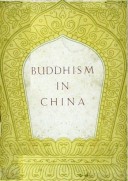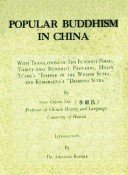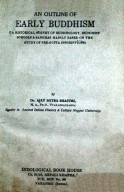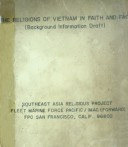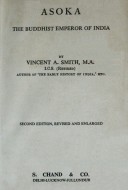Tìm Sách
Sách tiếng Anh-English >> The Five Mental Hindrances
Thông tin tra cứu
- Tên sách : The Five Mental Hindrances
- Tác giả : Nyanaponika Thera
- Dịch giả : Nyanaponika Thera
- Ngôn ngữ : Anh
- Số trang : 21
- Nhà xuất bản : Buddhist Literature Society-Ceylon
- Năm xuất bản : 1947
- Phân loại : Sách tiếng Anh-English
- MCB : 1210000003644
- OPAC :
- Tóm tắt :
CONTENTS
Preface
Motto
The Five Hindrances (Introductory Texts)
I Sensual Desire (kãmacchanda)
II Ill-Will (vyãpãda)
III Sloth and Torpor (thinamiddha)
IV Agitation and Worry (uddhaccakukkucca)
V Doubt (vicikicchã)
PREFACE
“Unshakable Deliverance of the Mind” (akuppa-ceto-vimutti) was solemnly declared by the Buddha to be the highest goal of his doctrine.
“Deliverance” means: the freeing of the mind from all the limitations, fetters and bondages which are tying it to the Wheel of Suffering, to the Circle of Rebirth. It means: cleansing the mind of all the defilements which are marring its purity. It means: the removing of all the obstacles which are barring the progress from the worldly (lokiya) to the supermundane consciousness (lokuttara-citta), i.e. to Sanctity (arahatta).
Many are those obstacles, but there are, in particular, five which, under the name of “Hindrances ” (nivarana), are very frequently mentioned in the Buddhist Scriptures:
1. Sensual Desire (kãmacchanda)
2. Ill-will (vyãpãda)
3. Sloth and Torpor (thĩna-middha)
4. Agitation and Worry (uddhacca-kukkucca)
5. Doubt (vicikicchã).
They are called “nivarana”, “Hindrances”, because they “hinder” or “envelop” the mind, i.e. they obstruct its development (bhãvãnã). According to the Buddhist teachings, Spiritual Development (bhavana) is twofold: through Clear Insight (vipassanã-bhãvanã) and through Tranquillity (samatha-bhãvanã). The latter is gained by the complete concentration of mind during the so-called “Absorptions” (jhana). For achieving these Absorptions, the overcoming of the Five Hindrances, at least temporarily, is the preliminary condition. It is in this connection that these five are most frequently mentioned in the Discourses of the Buddha, appearing there mostly in the stereotype wording as given in the first text of this anthology. According to later tradition, each of the Hindrances is inimical to one of the five Factors of the First Absorptions (jhananga), and, on the other hand, the gradual development of these Factors is an antidote against the respective Hindrances. We have therefore, in this anthology, indicated the mutual relation of these two Groups of Five. Not only the Absorptions but also the lesser degrees of concentration are impeded by the Five Hindrances, e.g. the so-called “neighbourhood-concentration” (upacãra-samãdhi) which is required for attaining Clear Insight (vipassanã). And not only this Clear Insight, but obviously any attempt of clear thinking will be affected by the presence of one of these Five Hindrances which are rightly called “a whole heap of unwholesome ness” (Samy-utta 47, 5).
This widespread influence of the Five Hindrances shows the urgent necessity of breaking down their power by constant effort. For, one should not mistake the words of our above-mentioned first text, by believing it to be sufficient to turn one’s attention to the Hindrances only at the moment when sitting down to think or to meditate. Such an “effort at the last minute” will rarely lead to success if not helped by the latent results of previous endeavours.
He who earnestly aspires to the Unshakable Deliverance of the Mind should therefore select a definite “working-ground” of a direct and practical import, a “kammat-thãna” in its widest sense, to which he endeavours to co-ordinate or even to subordinate his entire life. Already I his holding fast to his “working-ground” will be an important success in “bhãvană”, i.e. in “developing the mind”, because in that way the directive or purposive energies of the mind will be strengthened considerably. He who has chosen the “Conquering of the Five Hindrances” for such a “working-ground”, should examine which of these Five are strongest, in his personal case. Then he should carefully observe how and on which occasions they usually appear. He should further know the positive forces within his own mind by which each of the Hindrances can be conquered, and he should examine his life for any opportunity to develop these qualities which we have indicated here under the headings of the Spiritual Faculties (indriya), the Factors of Absorption (jhananga) and those of Enlightenment (bojjhanga). In some cases, we have added a few subjects of meditation which are helpful in overcoming the respective Hindrances.
By the “Worldling” (puthujjana), however, only a temporary repression and a partial weakening of the Hindran¬ces can be attained. Their final and complete abolishing takes place only on the following Stages of Sanctity (ariya- magga):
Worry; Doubt—on the 1st stage, the Path of Entering the Stream (sotãpattimagga)
Sensual Desire; Ill-will—on the 3rd stage, the Path of the Non-Returner (anãgãmĩ-magga)
Sloth and Torpor; Agitation—on the 4th stage, the Path of the Saint (arahatta-magga)
This shows that the reward of the fight against the Hindrances is not only the limited one of making possible a shorter or longer spell of penetrating insight or of meditation; but every step in weakening these Hindrances takes us nearer to the Stages of Sanctity where “Deliverance” from these Hindrances will be “unshakable”
As the purpose of this anthology is that of a manual for practical use, we have not overburdened it with material. We have further left unelaborated some of the Spiritual Faculties (indriya) etc. about which a wealth of information may easily be gathered from the Buddhist Scriptures.
Though most of the following passages are addressed to monks, they are likewise valid for people living in the world. As the Old Commentators say: “A monk (bhikkhu) is one who is striving in practice. One who practises, be he divine or human, gets the designation of monk.”
Nyanaponika Thera
“Island Hermitage”
Dodanduwa
Ceylon
 Facebook
Facebook
 Google
Google
 Google+
Google+

